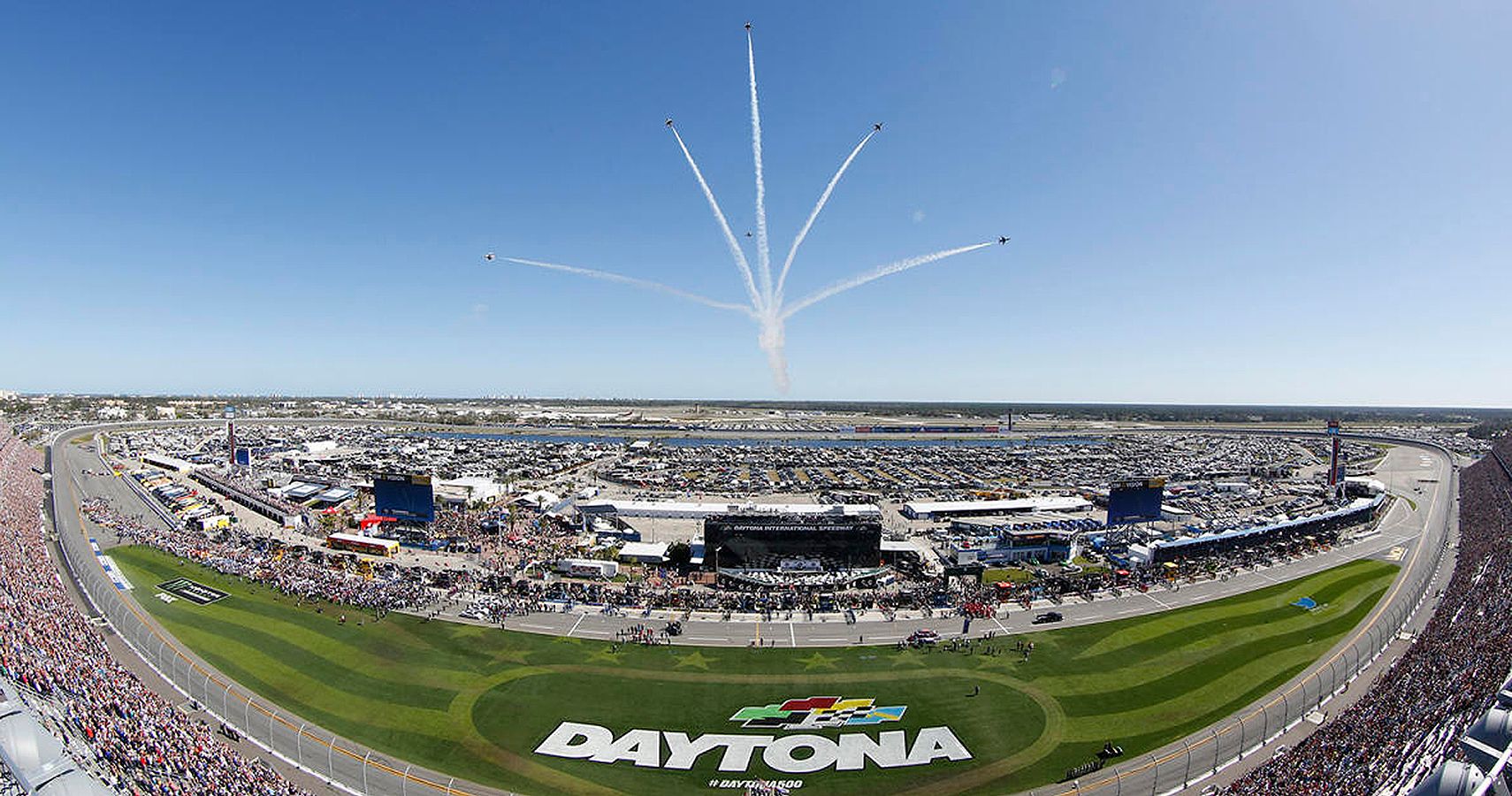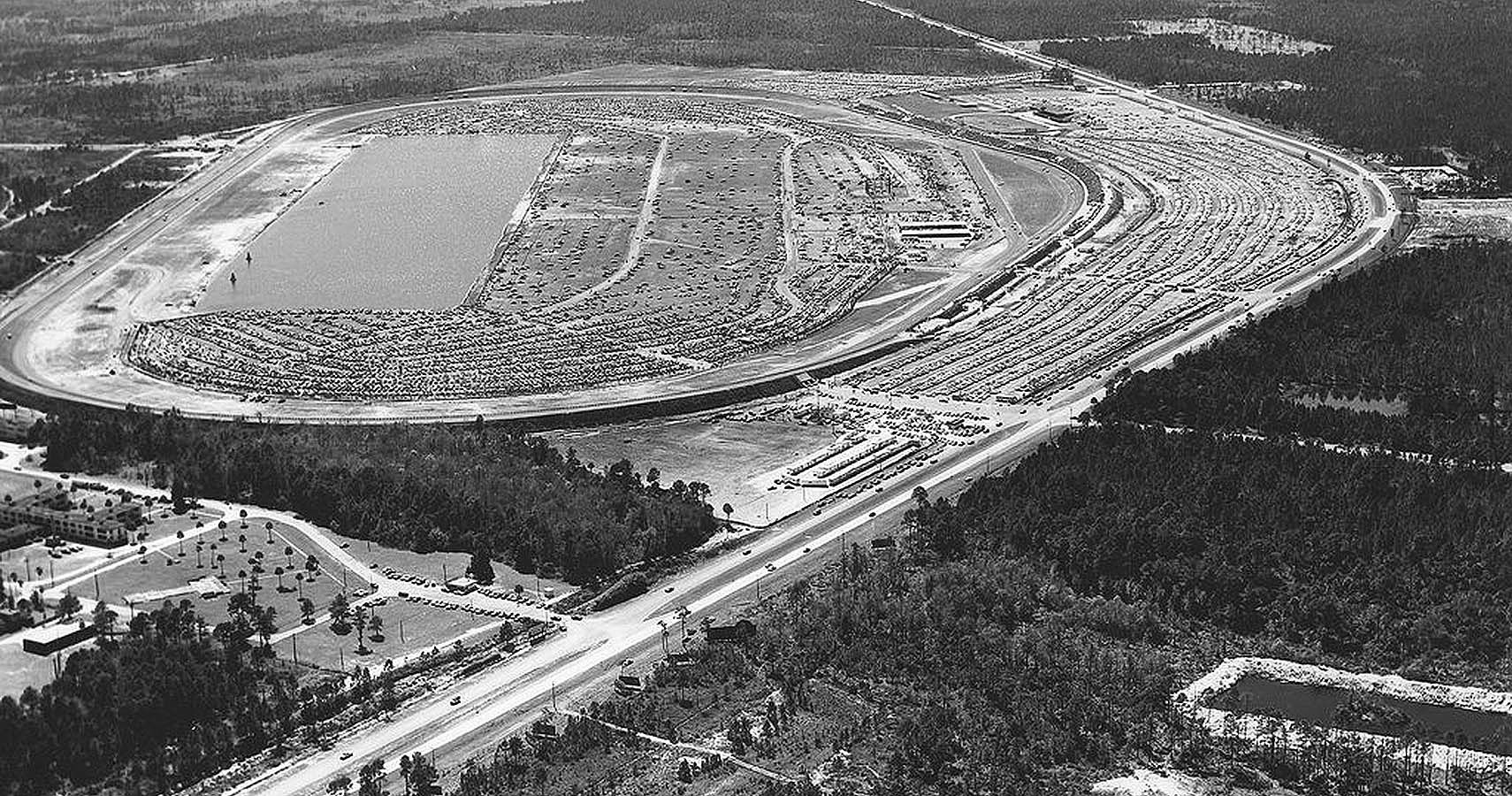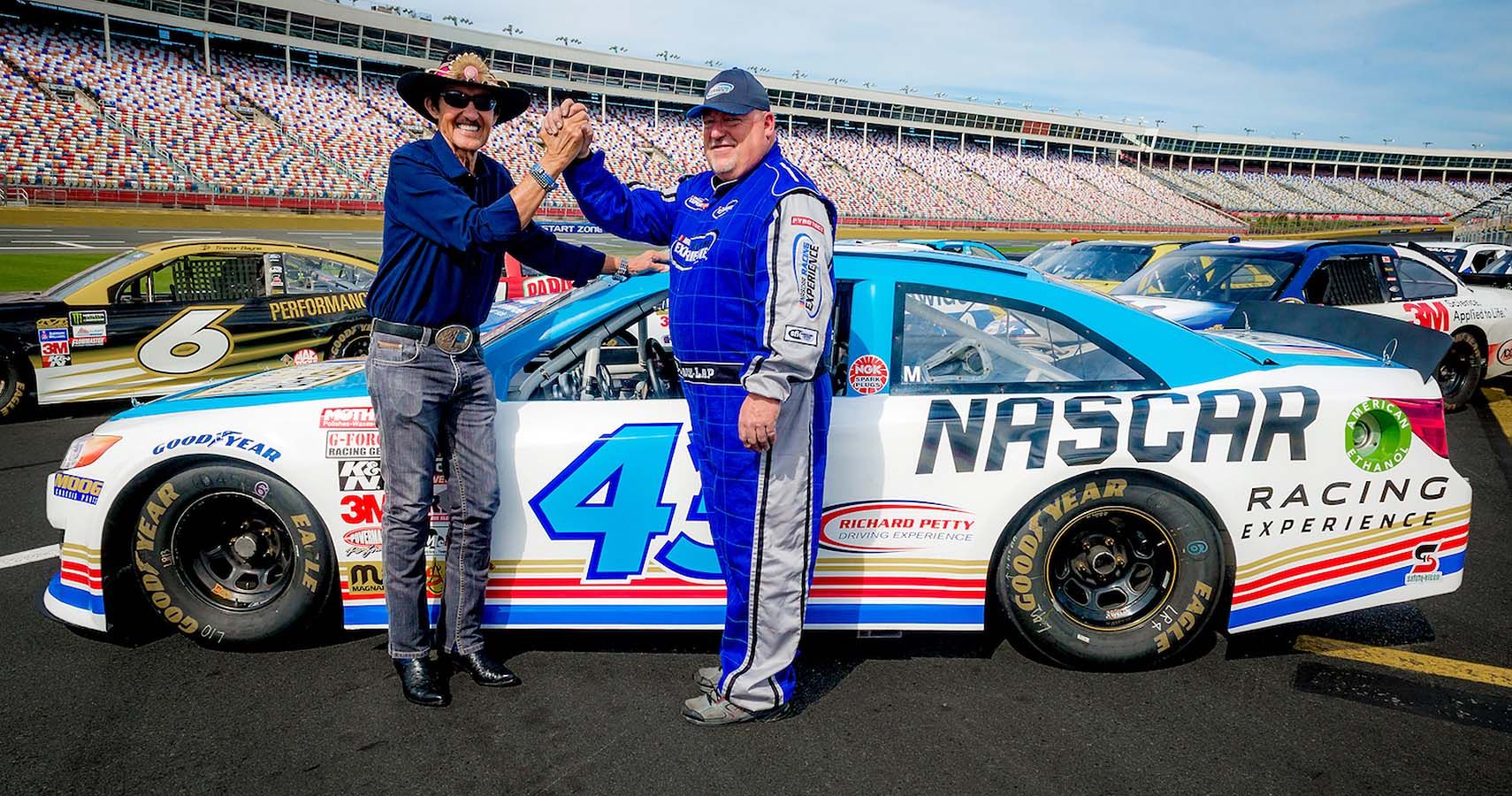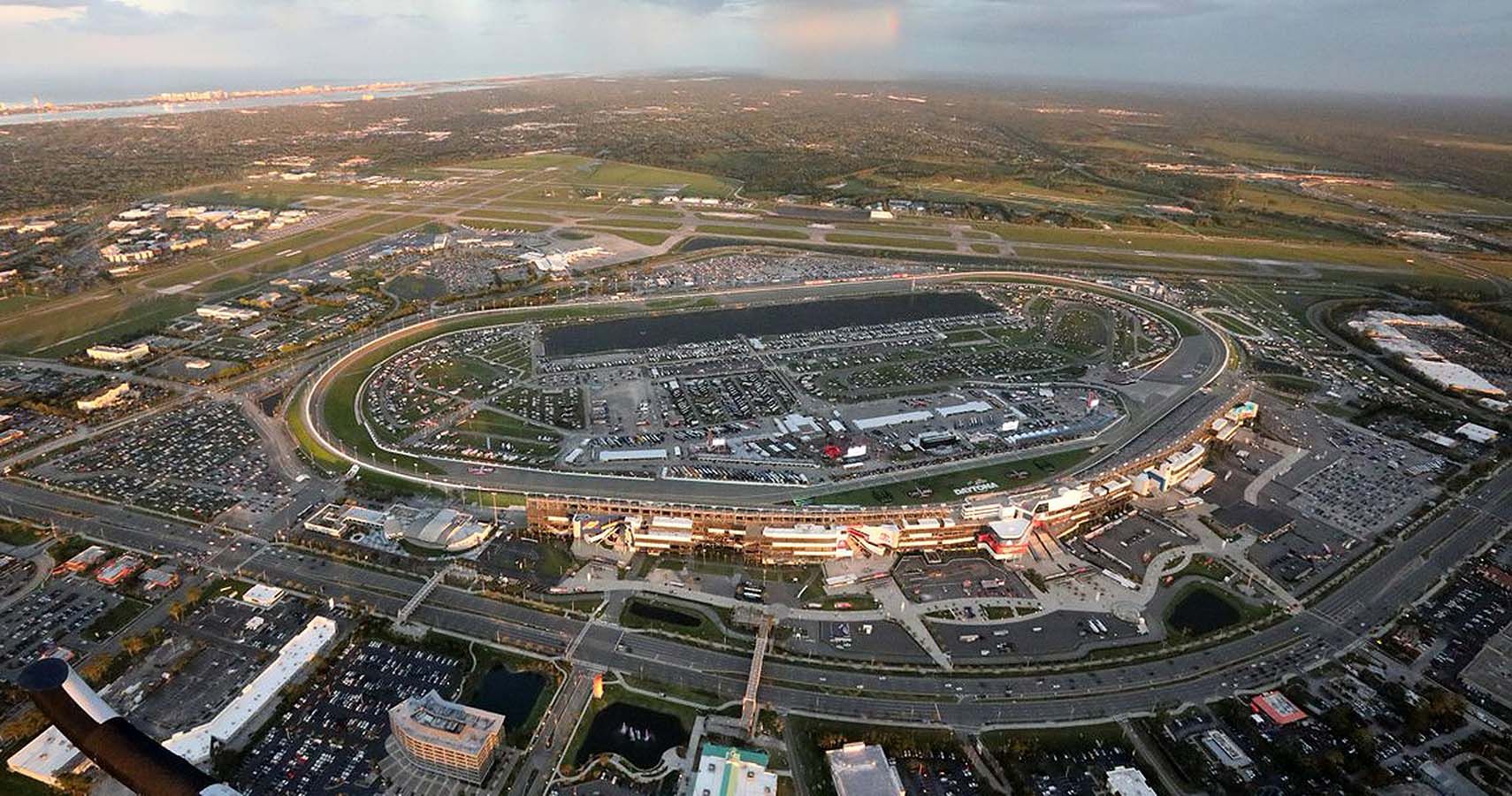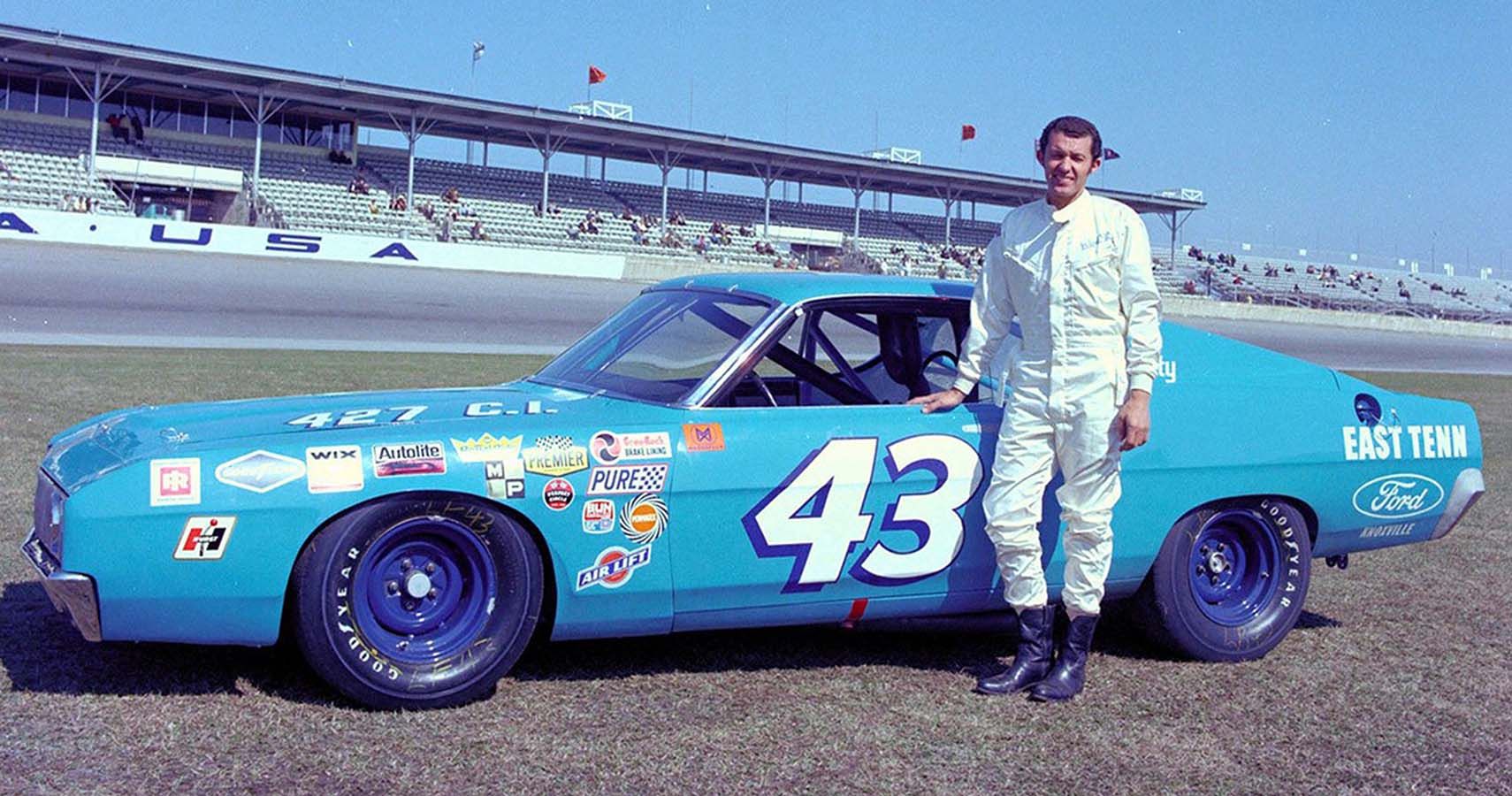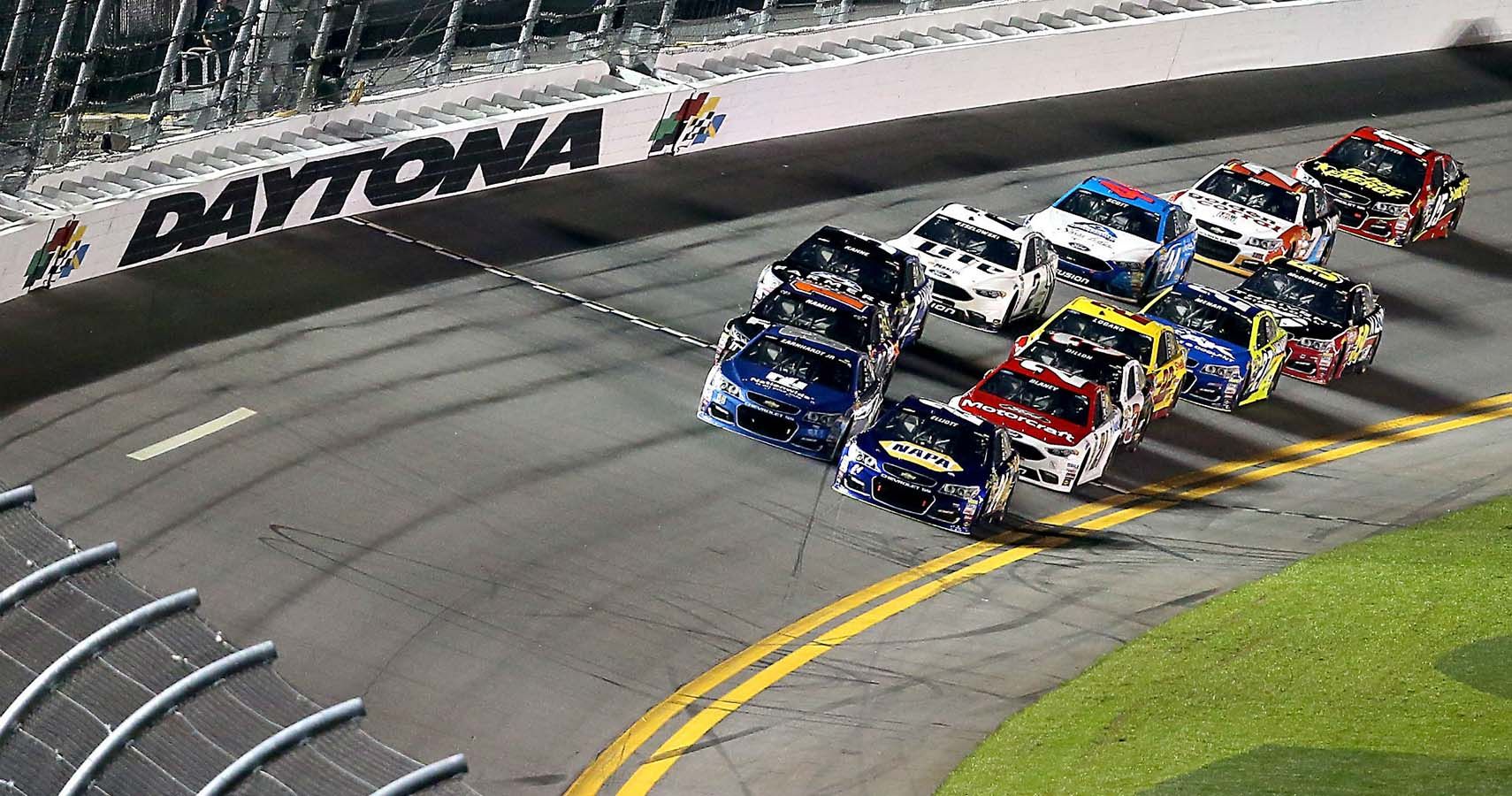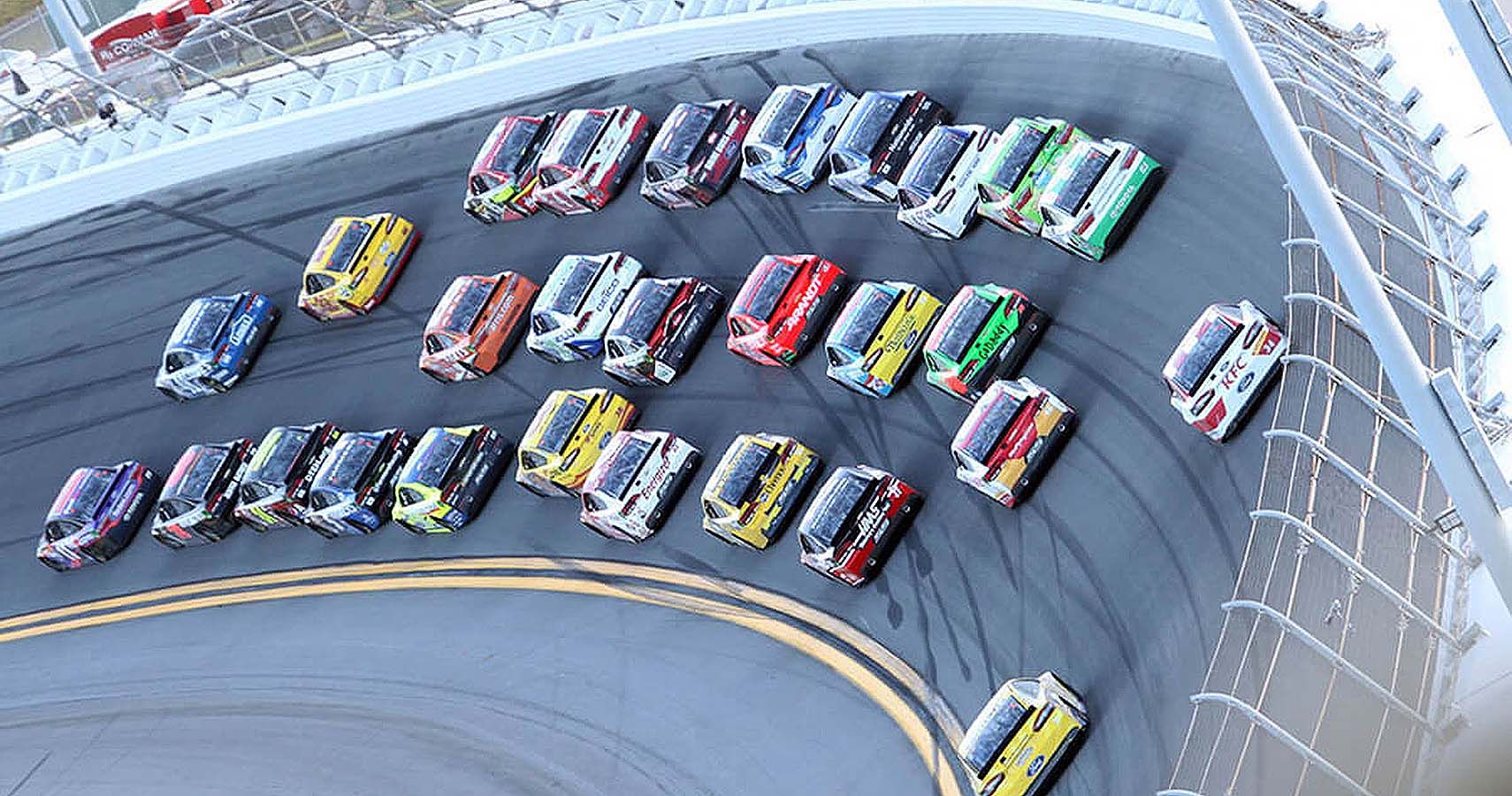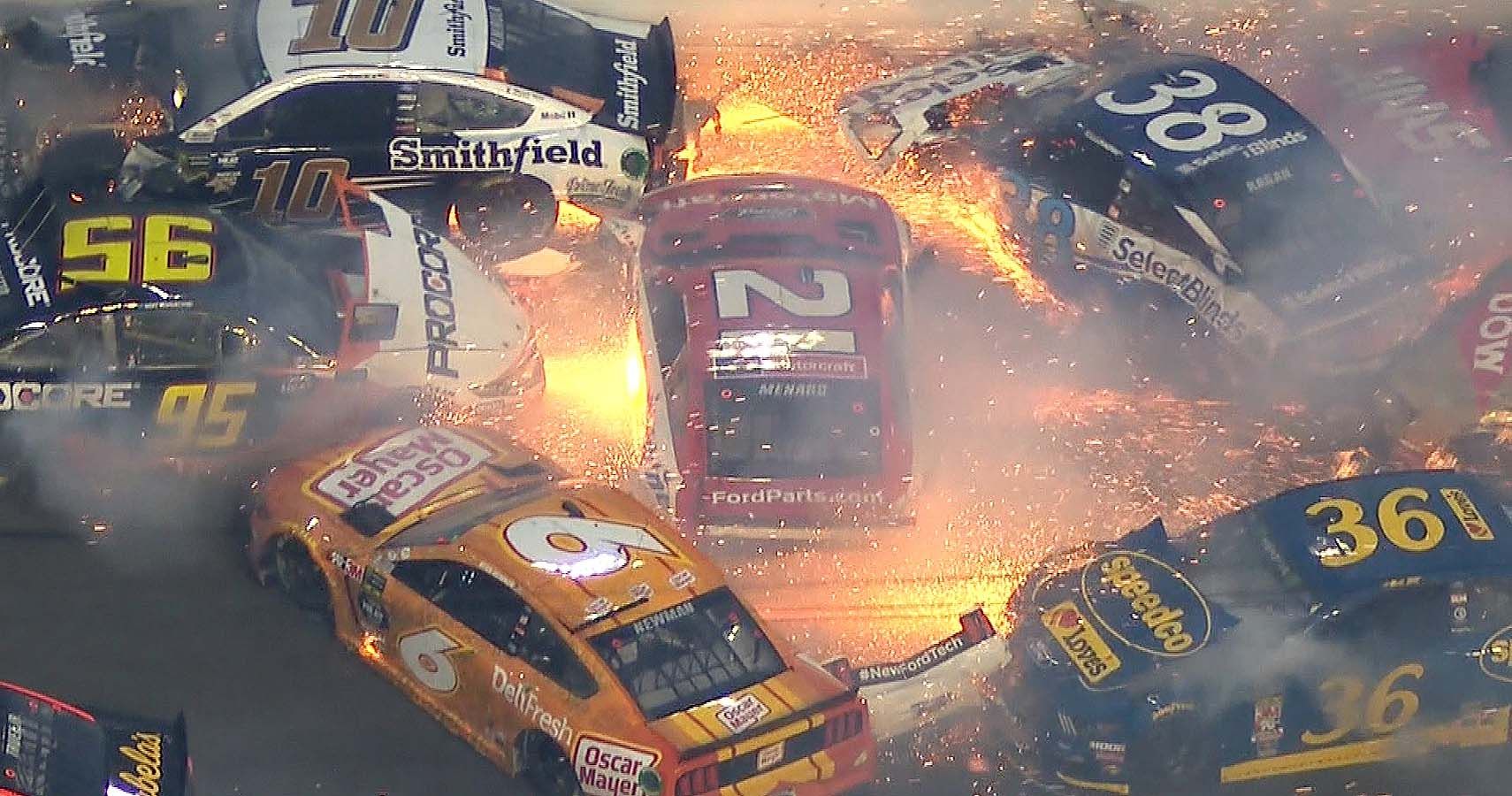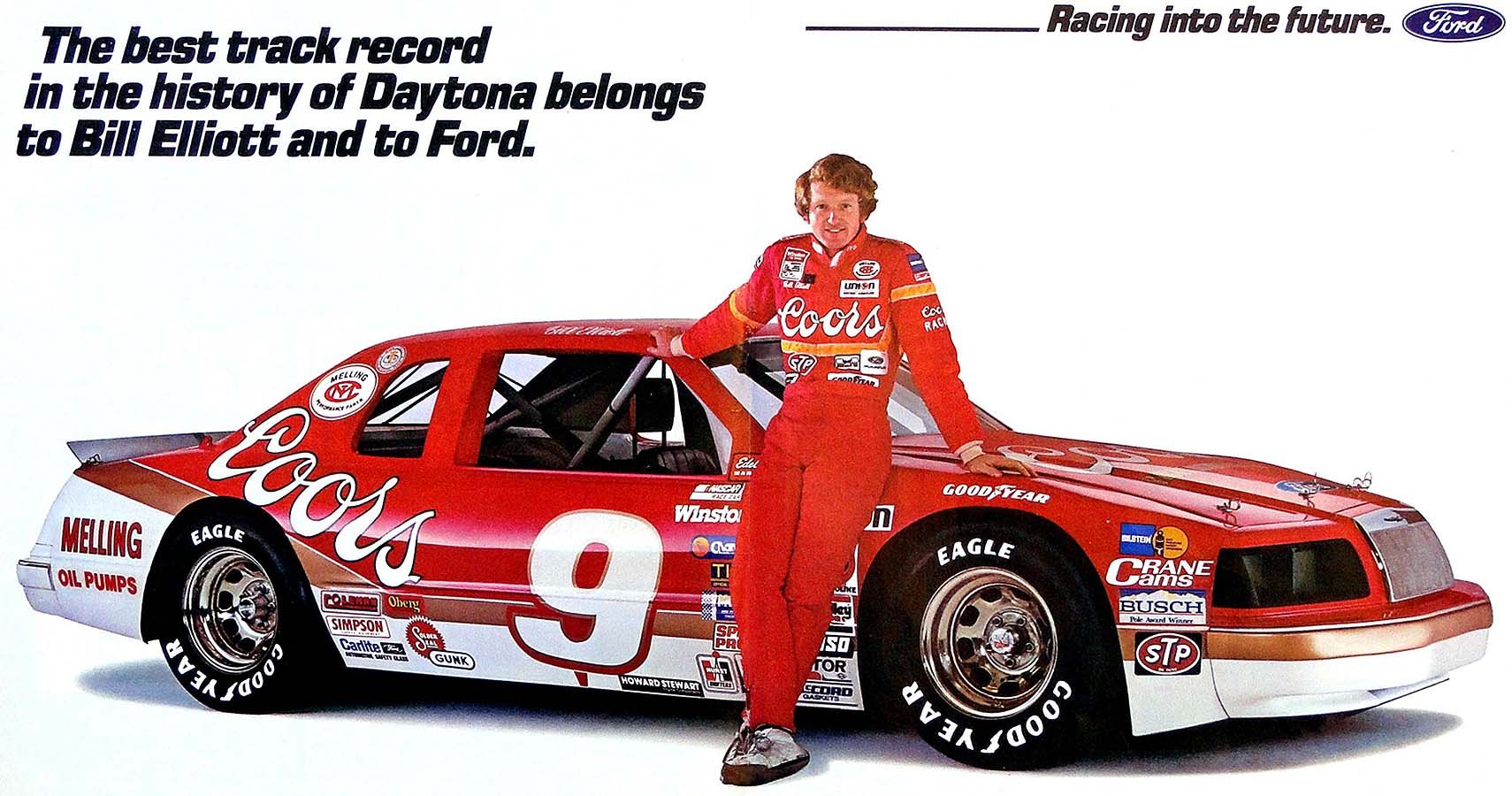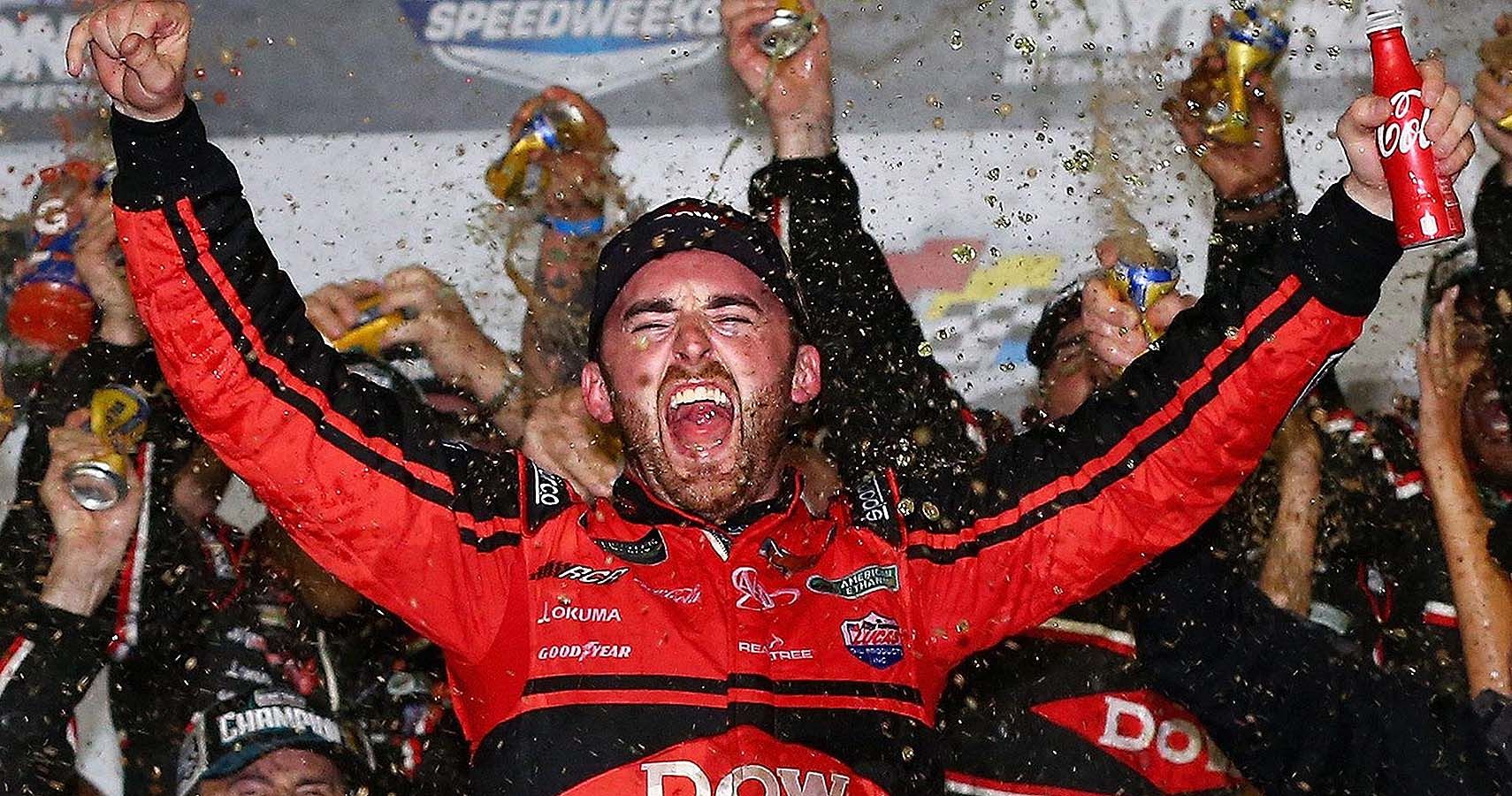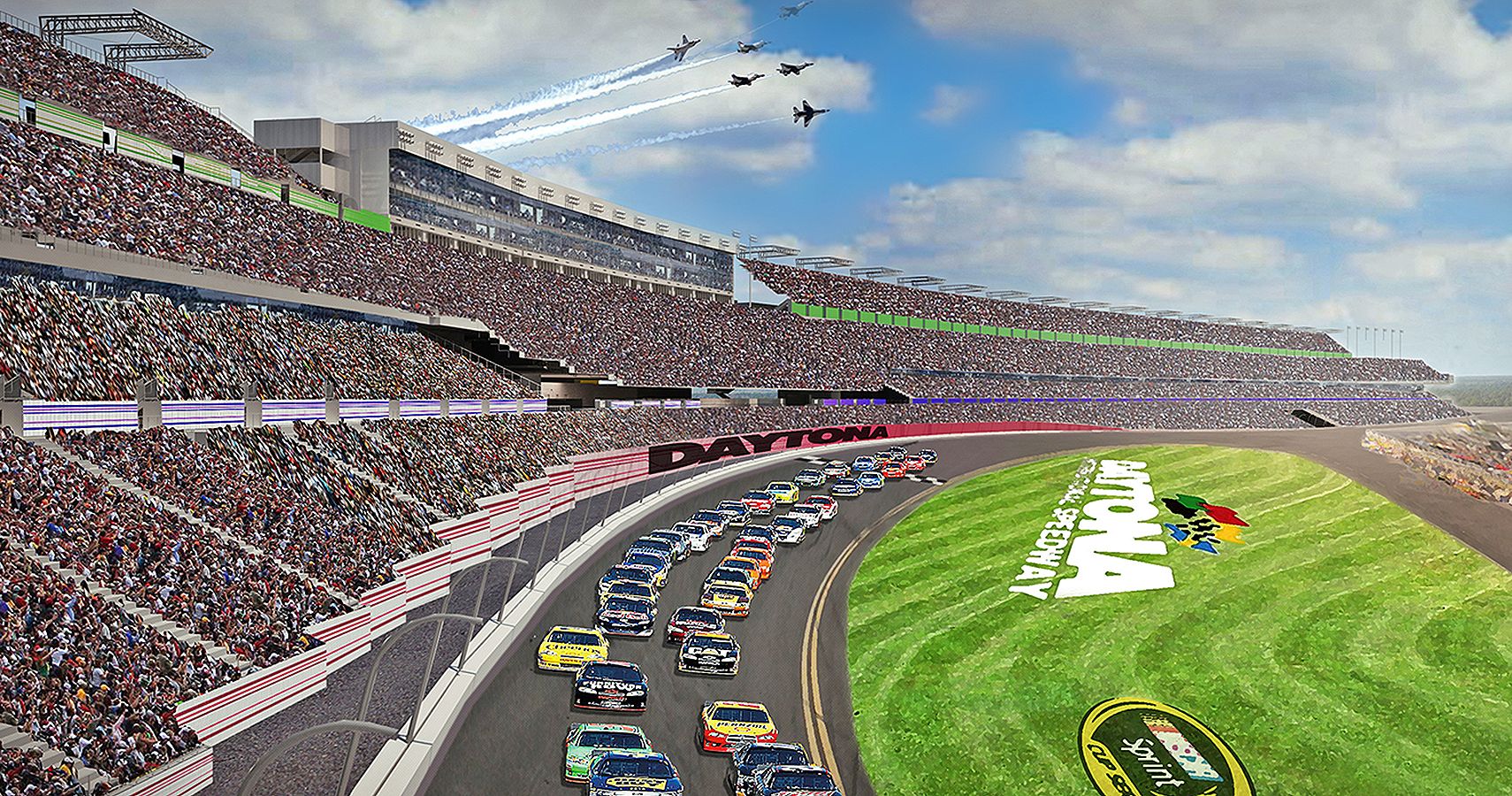Daytona. NASCAR. Car races. These words send a thrill down most of our speed-needy spines and fire up any and all auto racing fans. The Daytona International Speedway has been home to many a thrilling moment and close race finish, as well as nail-biting moments for the audience.
The Speedway is where the legendary Daytona 500 takes place and is the Holy Mecca for all NASCAR fans. So why don’t you learn some nifty details about the Daytona International Speedway, to better dazzle your NASCAR crazy friends with?
10 From Beach To The Speedway At $3 Million
The Daytona International Speedway is a huge expanse of a racing track pit and the audience seating and it opened way back in 1959. While it was being built, starting in 1957, the entire cost of this gigantic heart-stopping arena was a measly $3million.
Remember though, it may sound measly today but in the 50, $3mil was a princely sum. Before the Speedway, NASCAR races used to happen at the Daytona Beach Road Course; essentially, a beach. These early races are what helped NASCAR to gain popularity and become the brand it is today. Enough to warrant a dedicated track.
9 You Can Drive On It
No, not in any car you so drive to the parking lot. But you can drive a real NASCAR race car, or take a ride in one at the Richard Petty Driving Experience at the Daytona International Speedway.
And we all do know Richard Petty, right? But did you know it was his father, Lee Petty, who won the first Daytona 500 though Richard was also racing that day? Lee Petty won in a side-by-side three-car-abreast dramatic photo finish that took the officials three days to figure out as to who was the winner.
8 Numbers Don't Lie
The Daytona International Speedway is big and sounds even bigger when you get in some mathematics and numbers. It sits next to the Daytona International Airport in a lot that measures 448 acres, or roughly 400 football fields. The infield itself is 108 acres, which is a large enough number by itself and can fit two Disneylands.
Then the number of people that the Daytona International Speedway can seat is a massive 101,500 – that’s a huge number of car-crazy fans packed into one place. It contains a five-car course – and can race anything from cars to motorcycles, to even boats in that lake of its.
7 Richard Petty’s Daytona 500 Wins
Richard Petty used to race the Dodge Daytona Charger but when the Plymouth Road Runner came to town in the most stripped-down version of itself – that’s what he wanted. And that’s what he got in 1970, the Plymouth Road Runner Superbird. The man has an incredible number of wins in Dayton 500.
In 1964, he won in Plymouth, in 1966 it was Plymouth again, and in 1971, it was the Plymouth for the third time. In 1973 he won in a Dodge Charger, and again in 1974. Then it was the 1979 win in an Oldsmobile, and 1981 in a Buick. That seven Daytona 500 wins!
6 The Number Of Laps
So how many nail-biting, heart-stopping fast laps does it take to finish the Daytona 500? Most assume its 500 laps but in fact, the total distance a car is driven is 500 miles. The infield oval is a 2.5-mile circuit – so it takes all cars to do 200 whizzing rounds of it to finish their 500-mile quota.
Of course, NASCAR changes its rules from time to time taking in weather considerations and may cut down the laps to avoid any mishaps. In the case of a tie, sometimes the laps are further increased for NASCAR to be able to pronounce a definite winner as well.
5 The Banks Are Steep
The Daytona International Speedway is a tri-oval one with plenty of banking. The front stretch near the start-finish line has a relatively easy 18-degree banking but the sharpest turns can go all the way to 31-degrees.
Now 31-degrees may not sound like much while you are driving sedately on traffic-congested roads at 50-80mph – but when you watching the road as a 200mph blur, 31-degrees is quite the bank to steer safely at. Of course, the Daytona International Speedway adheres to all safety standards and meets all expectations – but when speeds are high, so are crashes.
4 Crashes, Losses And More
In the 2019 Daytona 500, the big one struck. And by that, we mean a big, big crash that took out 19 cars when it happened. With only 10 laps left, Paul Menard hit Matt DiBenedetto and these two cars took out half of the infield with them. Ever since Dale Earnhardt’s sad death in 2001, no one has died on the Daytona International Speedway since which is a relief.
However, there have been some 40 fatalities on this track over the years, with some 23 drivers and 12 motorcyclists succumbing to their need for speed. Other deaths include three go-kart drivers, one powerboat racer as well as the death of a track worker in a crash.
3 The Ultimate Speed Record
Things have come a long way from the first inaugural race at Daytona International Speedway – the Rolex 24 was a three-hour, 82-lap race in 1959. Compared to the world speed record so set by Million-Dollar Bill, aka ford driver Bill Elliot, the 1959 race must have seemed slow. In the Daytona 500 of 1987, Bill Elliot finished a lap in 42.78 seconds at a whopping speed of 210.36mph.
In the very next year, NASCAR introduced the restrictor plate rule for Daytona, keeping horsepower low and speeds controlled in fears of worse crashes. So Million Dollar Bill kept his record for a long, long time indeed because NASCAR wouldn’t allow anything faster.
2 Monies At The Daytona International Speedway
Home to the Daytona 500 and many other prestigious races, there is a ton of prize money at stake at the banks and curves of the Daytona International Speedway. While the monies are not publically announced or even addressed, the top spot team of the Daytona 500 wins a lovely cheque of about a million dollars.
Obviously, the aim of the drivers isn’t solely to get rich – you have to have a passion for putting your neck on the line for speeds best left to a juggernaut-level forces of nature. But all those crazy G-force hours seem to make more sense when you realize your bank account is suddenly many-numbered.
1 More Mind-Boggling Statistics: Daytona Rising
The amount of lighting at Daytona International Speedway’s night races could power up a tiny country – 2,000 massive lights support the night race alone. Far from the $3million in 1959, Daytona Rising is a $400million reimagining of the Daytona International Speedway. The amount of steel used in Daytona Rising is 1% of the total US output of steel – it is that immense.
Daytona Rising has created some 6,300 new jobs, and over 300 million in labor income has been paid. 85 million in new tax revenue has been collected, with hundreds of new clubs and lounges springing up throughout the venue to provide visitors with the ultimate in climate-controlled luxury.

